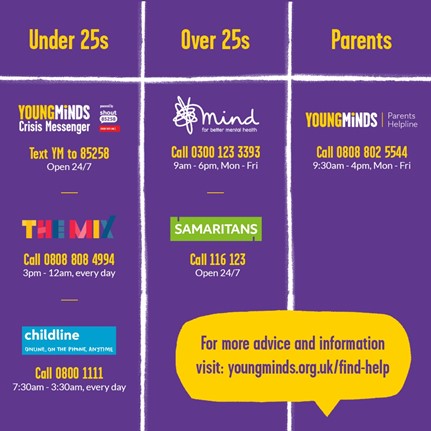Weekly Safeguarding Message - Avenues of Support for the Christmas Holidays
Please find below the Avenues of Support for the Christmas holidays. Remember, no-one should ever feel alone, and help is available by connecting with others.

Christmas Wellbeing Newsletter
Shout – here for you 24/7 with resources and tips to support you when you are feeling anxious, low, stressed or overwhelmed.
The Mix – understanding Mental Health can be trick but The Mix is there to make sure you don’t have to do it alone. The Mix Counselling service offers short-term help with mental health and emotional wellbeing for anyone aged 25 and under.
Young Minds – can help you find the right support for you. From looking after your mental health to understanding medication, they are lots of useful links to all kins of advice and guidance.
Mind – Mind understand mental health and wellbeing. They are there for you if you are finding things hard. They help everyone understand mental health problems, so no-one has to feel alone.
The Tellmi app - allows you to talk anonymously about difficult things with other people of a similar age or experience. Tellmi is anonymous so you can talk about virtually anything, and because every post and reply is checked by a human before it goes live, it is completely safe and you are guaranteed to only get supportive replies. When you register, remember to add your school portal. This will tell you about other things in school to support you. “I actually didn’t realise how much better this app can make someone feel. I love being able to ask my own questions and just the experience of trying to help even one other person helps me to feel happier too”.
Tellmi is completely confidential. Download. Offload. Feel Better.
Tellmi can be downloaded for free from Google Play and Apple App Store. For more information visit www.tellmi.help
Have a restful and peaceful break.
The Student Welfare Team
